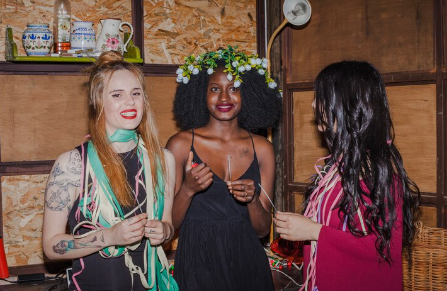The Silpuri Guarani: A Journey into Culture, Language, and Community

Nestled within the complex cultural tapestry of South America, the story of the Silpuri Guarani represents a profound narrative of resilience, identity, and the enduring power of tradition. While the Guarani people are widely recognized as one of the most prominent indigenous groups across Paraguay, Brazil, Argentina, and Bolivia, the specific community associated with Silpuri offers a unique lens through which to examine the contemporary indigenous experience. This community, like many others, navigates the delicate balance between preserving its rich ancestral heritage and adapting to the relentless pressures of the modern world. To understand the Silpuri Guarani is to delve into a world where language is not merely a tool for communication but a vessel of spiritual wisdom, where crafts are not simply commodities but narratives woven in thread, and where the very concept of community transcends physical space to become a sacred commitment to mutual support and cultural continuity. Their journey is a microcosm of the broader indigenous struggle and triumph, offering invaluable lessons about the preservation of human diversity in an increasingly homogenized global landscape.
The historical context of the Guarani people as a whole is marked by both great spiritual depth and immense hardship, a legacy that undoubtedly shapes the Silpuri community of today. Renowned for their early resistance to colonization and their unique adoption of certain aspects of Jesuit missionary life in the famous Jesuit Reductions, the Guarani developed a complex relationship with the outside world that continues to this day. The community in Silpuri, whether as a traditional settlement or an urban diaspora, carries the weight of this history. Their identity is deeply interwoven with a profound connection to the land, known as the Tekoha, a concept that signifies not just a physical territory but the very source of a good and dignified life, the foundation of their culture and spirituality. The displacement from their ancestral lands, a common story for many indigenous groups, represents a spiritual and cultural catastrophe as much as an economic one, severing vital links to their history, their sacred sites, and the natural environment that sustains their traditional ways of life and knowledge systems. This historical backdrop of resilience in the face of displacement and cultural pressure is essential for understanding the current social and economic dynamics of the Silpuri Guarani.
At the heart of the Silpuri Guarani identity lies their language, a cornerstone of their cultural survival and a key marker of their distinctiveness. The Guarani language, specifically the Paraguayan Guarani dialect, is not only a means of daily communication but a repository of ancestral knowledge, myths, and a unique worldview that categorizes the natural and spiritual world in ways vastly different from Western paradigms. For the Silpuri community, the active use of Guarani in homes, community gatherings, and cultural ceremonies is a powerful act of resistance and preservation. It is through the language that elders pass down oral histories, that traditional songs are sung, and that the intricate relationships between all living things are expressed. The challenge of maintaining linguistic fluency among the younger generations, who are often more immersed in Spanish or Portuguese-speaking environments for education and employment, is a significant one. Therefore, community-led initiatives to teach the language, to create literature, and to ensure its use in both private and public spheres are critical endeavors that go far beyond linguistics, representing a fundamental fight for the future of the Guarani soul and intellect.
The economic and social life of the Silpuri Guarani is often characterized by a vibrant tradition of craftsmanship that serves as both a cultural expression and a vital source of income. The community is renowned for its exquisite artisanal work, particularly the intricate weaving of baskets and the creation of beautiful beadwork and ceremonial regalia. These are not mere souvenirs; each piece is a narrative, incorporating traditional patterns and symbols known as ñandutí (spider web) or other geometric motifs that hold cultural significance, often representing elements from nature like animals, plants, and celestial bodies. The production and sale of these crafts provide a crucial economic lifeline, especially for women, allowing families to sustain themselves while proudly displaying their heritage. This artisan economy is supported by a strong sense of communal solidarity, where knowledge is shared collectively and the well-being of the community is often prioritized over individual gain. This social structure, built on reciprocity and shared responsibility, forms the bedrock of the Silpuri Guarani community, enabling them to support one another through the various economic and social challenges they face in a world that frequently marginalizes their way of life.
In conclusion, the Silpuri Guarani stand as a powerful testament to the enduring strength of indigenous culture. Their story is one of continuous adaptation without assimilation, of finding ways to navigate the 21st century while holding fast to the spiritual and cultural pillars that have defined them for centuries. The challenges they face—from land rights and economic pressures to linguistic preservation and cultural erosion—are immense, yet their continued existence and cultural vitality are a triumph. Engaging with and understanding the Silpuri Guarani is not an act of mere academic interest; it is an acknowledgment of the rich diversity of human experience and a recognition of the critical importance of protecting these unique cultural landscapes. Their journey reminds us that the preservation of indigenous knowledge, languages, and traditions is not just their responsibility, but a valuable imperative for all of humanity, offering alternative paradigms of living that are deeply connected to community and the natural world.
FAQ: Understanding the Silpuri Guarani
Q1: Who exactly are the Silpuri Guarani?
The Silpuri Guarani are a specific community of the broader Guarani indigenous people, one of the largest native groups in South America. “Silpuri” likely refers to their geographic location or community name. They share the core Guarani cultural, linguistic, and spiritual heritage while having their own local history and community structure.
Q2: Where is the Silpuri Guarani community located?
While “Silpuri” is not a widely recognized geographic name on major maps, it is most commonly associated with a Guarani community in Paraguay, and potentially in the border regions of Argentina or Bolivia. Specific locations can often be settlements or villages where Guarani people have established their communities, sometimes as part of an urban periphery.
Q3: What is the main language of the Silpuri Guarani?
Their primary language is Guarani, specifically a dialect of Paraguayan Guarani. Guarani is a unique indigenous language that holds co-official status with Spanish in Paraguay, a rarity in the Americas. Many community members are bilingual, also speaking Spanish or Portuguese.
Q4: What are the Silpuri Guarani known for?
They are renowned for their rich cultural traditions, particularly their exquisite craftsmanship. This includes intricate basket weaving, detailed beadwork, and the creation of textiles featuring traditional patterns like ñandutí. These crafts are both a vital cultural expression and an important source of economic sustenance.
Q5: What are the biggest challenges facing the community today?
Like many indigenous groups, the Silpuri Guarani face significant challenges, including securing land rights (Tekoha), economic marginalization, and the pressures of cultural assimilation that threaten their language and traditions. Preserving their cultural identity for future generations while achieving economic sustainability remains a central struggle.



